While my journey through England continues, today I want to take you to a city that was my home for over ten years: Pisa.
As a child, I had only visited Pisa a few times with my family, and I never imagined that one day it would welcome me with open arms and become the place where I’d live the ten most formative years of my life. Pisa shaped me deeply, not only through the experiences I lived there, but through the people I met, the streets I walked, and the quiet beauty of its corners. It will always hold a special place in my heart.
Pisa is a city like no other, unique, layered, and filled with contrasts. Its long and complex history is hard to contain in a single story, but I want to share a few places that meant a lot to me, places where centuries of culture, nature, and academia come together in surprising harmony.
The city is home to a historic university founded in 1343, and within it lies the Scuola Normale Superiore, an elite institution that has educated some of Italy’s, and the world’s, most influential scientists, philosophers, artists, and political figures. It's a reminder that Pisa, while small in size, has always had a wide-reaching impact.
For me, Pisa is made up of moments. Afternoon walks through the Parco delle Piagge, a quiet path that runs alongside the Arno, shaded by trees and lined with benches. Getting lost among the narrow alleys that lead to Corso Italia, the city’s main shopping street, before arriving at Piazza Garibaldi, and then continuing to Piazza Santa Caterina, a peaceful, hidden square that offers both refuge and greenery. These are the places that helped me grow, that offered me space to think, to dream, and to simply be.
I hope this glimpse into some of my favorite corners of Pisa reaches you, and perhaps even enchants you, just as the city enchanted me.
Journey to the City of the Leaning Tower
Pisa is far more than its iconic Leaning Tower. Every year, visitors from all over the world arrive here to strike the classic pose, arms raised as if holding up the tilted monument, but the city reveals itself slowly, beyond the photos and postcards.
Since 1987, the famous Piazza dei Miracoli (the Square of Miracles) has been a UNESCO World Heritage Site, celebrated for its remarkable harmony and concentration of art and architecture: the Duomo, the Baptistery, the Camposanto, and, of course, the Leaning Tower. Together, they form one of Europe’s most breathtaking ensembles, nestled on a glowing stretch of emerald-green lawn.
The Scuola Normale Superiore: Pisa’s Intellectual Jewel
In the very heart of the city, looking out over Piazza dei Cavalieri, stands one of Europe’s most prestigious academic institutions: the Scuola Normale Superiore di Pisa.
Founded in 1810 by Napoleon Bonaparte as a Tuscan counterpart to Paris’s École Normale Supérieure, the school has long been a hub for advanced research and intellectual excellence. Its main building, the Palazzo della Carovana, was redesigned in the 16th century by Giorgio Vasari and is decorated with elaborate sgraffito, Medici busts, and coats of arms.
Inside, some of the greatest Italian minds have walked its halls — including Giosuè Carducci, Giovanni Pascoli, Antonio Pacinotti, Enrico Fermi, and Carlo Rubbia. Today, it remains a home to brilliant students and scholars, continuing its legacy of excellence in a place steeped in history.
Art, Culture, and Museums
Beyond the monuments, Pisa offers a rich cultural scene. The San Matteo Museum houses one of Italy’s most important collections of medieval art, while Palazzo Reale reveals the elegance and history of Pisa’s noble families.
One of my favorite spots is Palazzo Blu, a striking deep-blue building along the southern Lungarno. It hosts exhibitions by world-renowned artists , from Picasso to Magritte, Kandinsky to Warhol, and serves as a vibrant cultural center that keeps the city’s creative spirit alive.
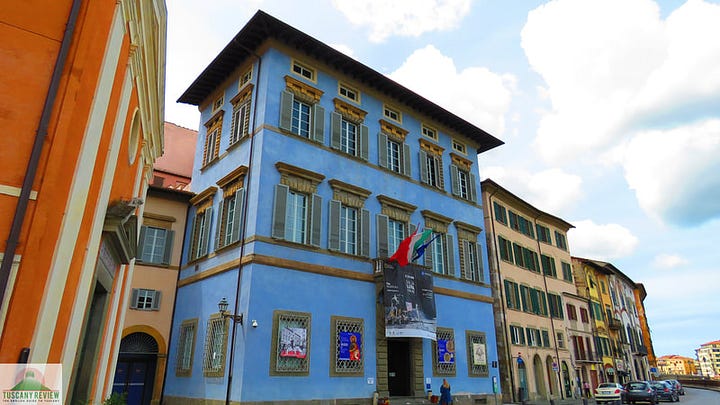
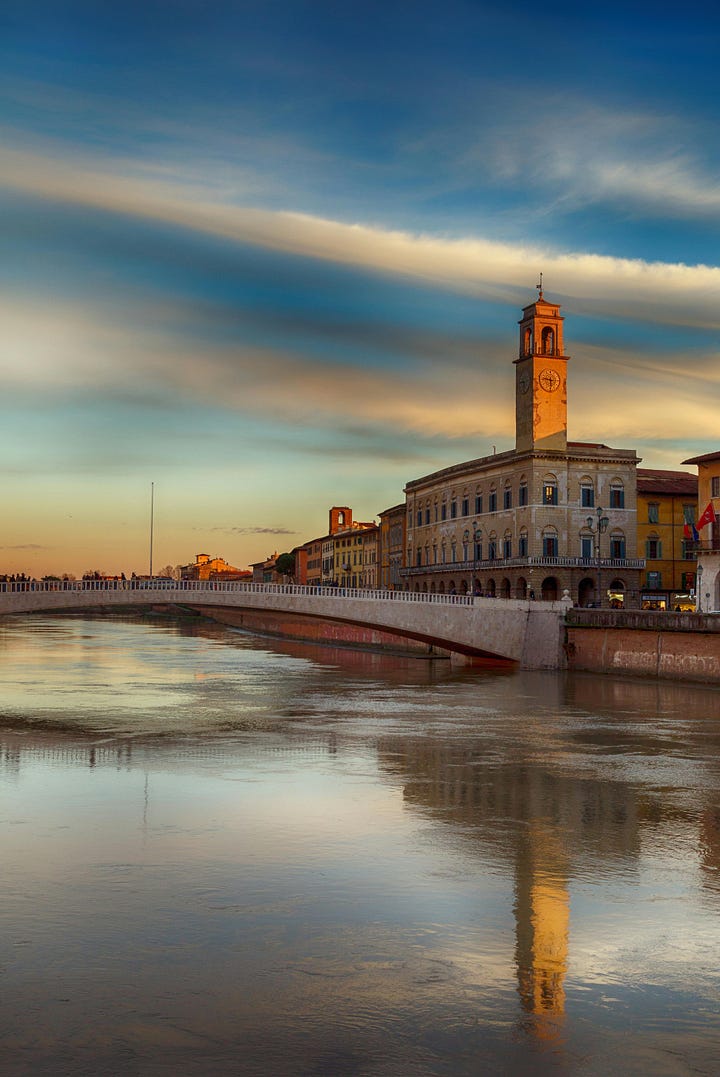
Light Over the River: La Luminara di San Ranieri
Every June 16, Pisa is transformed by one of its most magical traditions: La Luminara di San Ranieri. As dusk falls, the Lungarni glow with over 70,000 candles, carefully arranged in glass holders and white wooden frames that outline the buildings, bridges, towers, and churches along the river.
Even the Leaning Tower glows with oil lamps, shining in the dark like a floating lighthouse. Thousands of candles are also set adrift on the Arno, carried by the current. This luminous celebration dates back to 1688, when the relics of San Ranieri, Pisa’s patron saint, were transferred to the cathedral.
It’s a night where the city becomes poetry ,fragile, flickering, unforgettable.
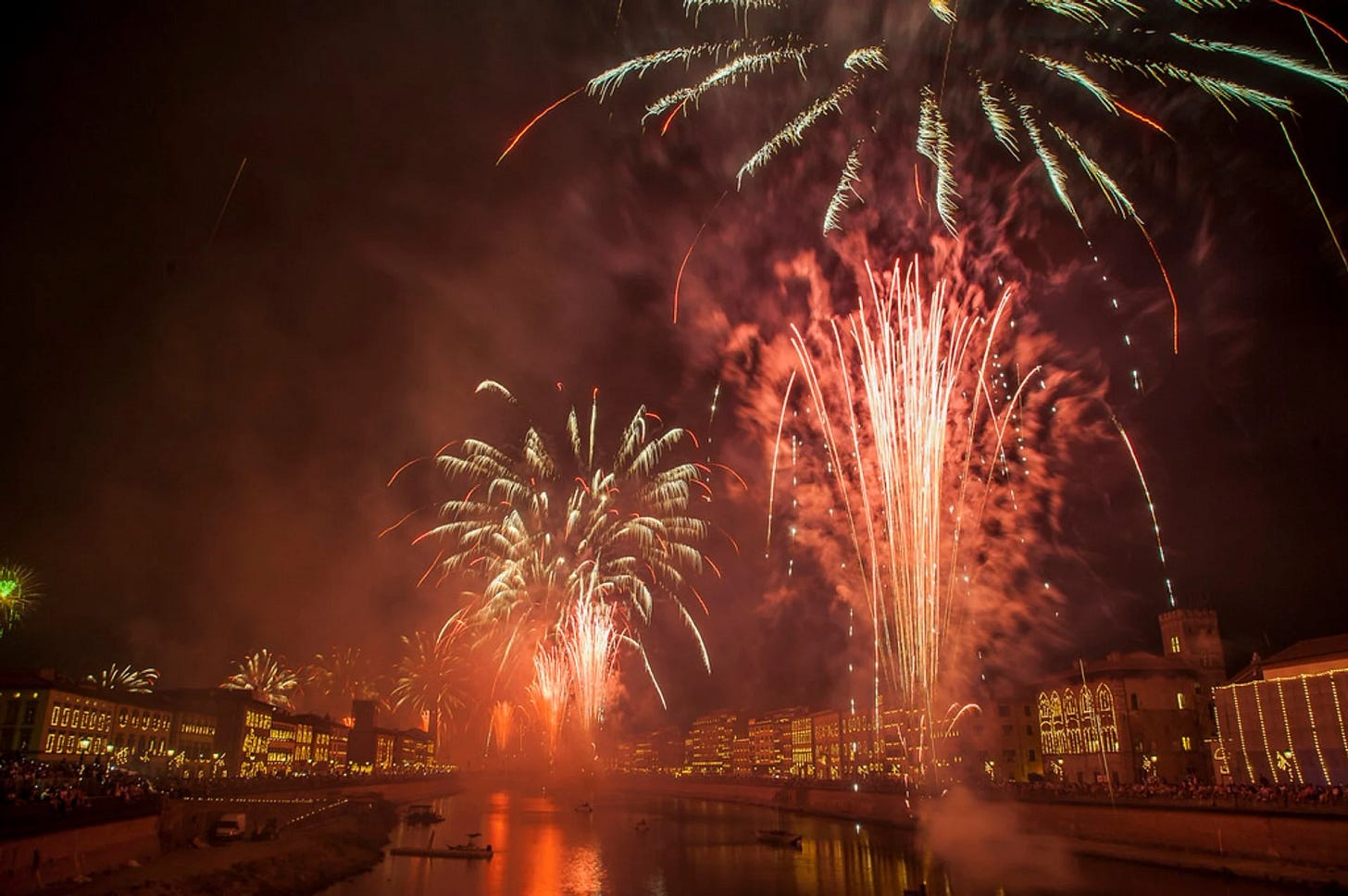
A Green Oasis in the Heart of the City: The Botanical Garden
Just a few steps from Piazza dei Miracoli and Piazza dei Cavalieri lies one of Pisa’s most serene and surprising gems: the Botanical Garden — a quiet oasis of science, beauty, and history.
Founded in 1543–44 by the naturalist Luca Ghini, it is the oldest university botanical garden in the world. Originally located by the Arno, it was moved to its current location in 1591, in the very heart of the historic center.
Covering three hectares, the garden features plants from all over the world — from medicinal herbs like foxglove to aquatic species, exotic flora, and centuries-old trees. Among its highlights are a towering magnolia, a majestic ginkgo biloba planted in the late 1700s, and a grand camphor tree dating back to 1872.
The Botanical Museum, located inside the garden, is a treasure trove of scientific heritage. Founded by Ferdinando I de’ Medici, it contains 17th-century portraits of renowned botanists, intricate botanical watercolors, and one of Europe’s most significant collections: the Herbarium, which includes over 300,000 plant specimens — still actively used by researchers today.
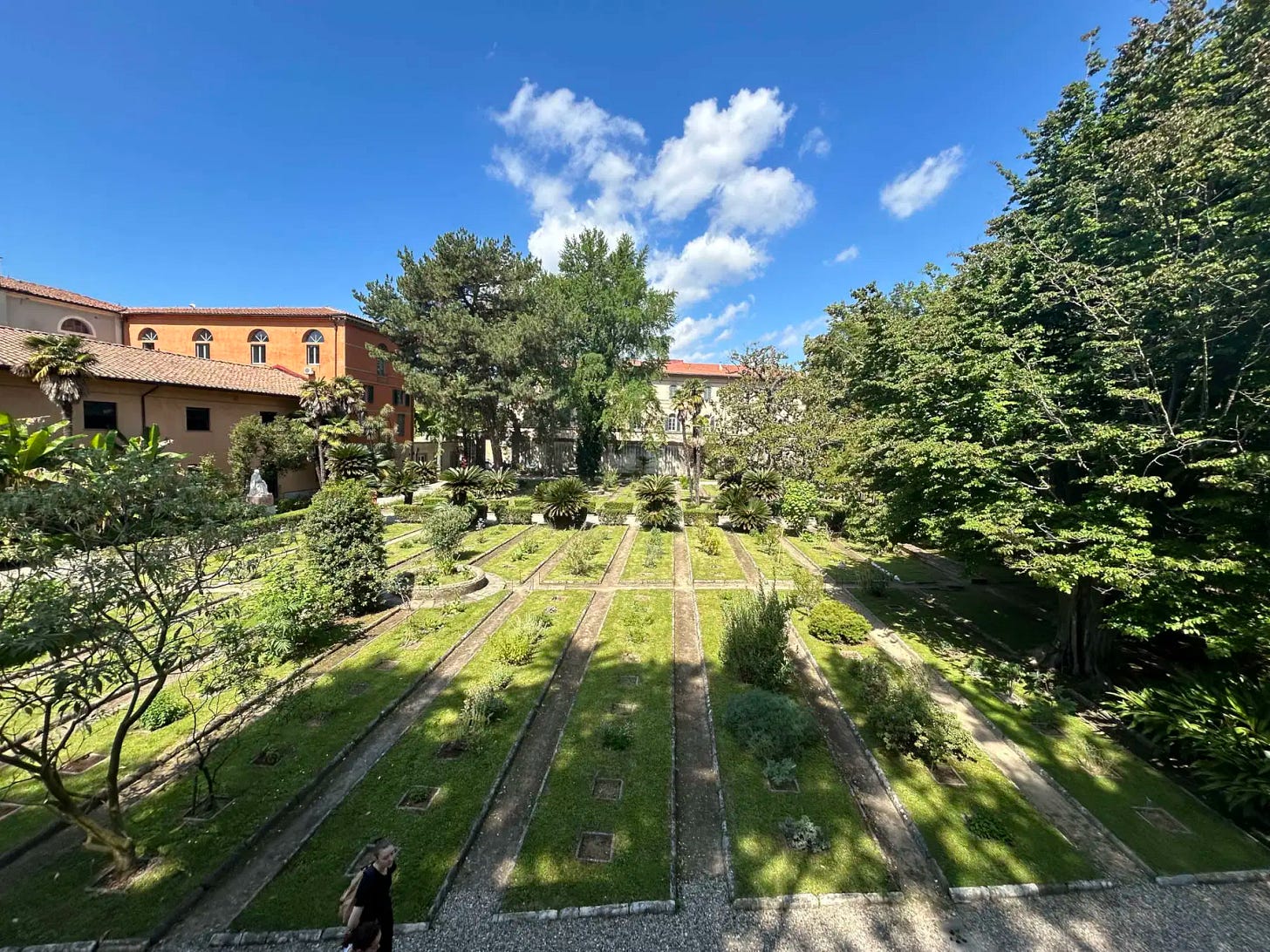
From the Forest to the Sea: The San Rossore Park and Marina di Pisa.
Pisa was once one of Italy’s four Maritime Republics, alongside Venice, Genoa, and Amalfi. In the Middle Ages, its powerful navy ruled the western Mediterranean, and its ships brought wealth, knowledge, and influence back to the city. That seafaring legacy is still felt today, in the city's architecture, in its sense of openness, and in the traditional Regatta of the Maritime Republics, where Pisa competes every year in a historical boat race.
The city's connection to the sea continues just outside its walls. A short drive or bike ride leads to Marina di Pisa, where the Arno River flows into the Tyrrhenian Sea. Once a quiet fishing village, it’s now a peaceful seaside town, perfect for long summer walks along the rocks, afternoons at the beach, or watching boats drift in and out of the small harbor. Just a bit further down the coast lies Tirrenia, with its sandy beaches, pine forests, and classic Italian holiday vibe, a popular escape for both locals and visitors looking for a slower pace and sea air.
One of the things I love most about Pisa is how easily it connects city and nature. Just a short ride from the center lies the vast San Rossore Estate, the green heart of the Migliarino–San Rossore–Massaciuccoli Natural Park, one of Italy’s largest protected coastal areas.
Here, wide meadows, ancient pine forests, and freshwater marshes stretch all the way to the sea. It’s a sanctuary for wildlife, deer, wild boar, herons, and a haven for walkers, cyclists, and nature lovers.
Follow Viale D’Annunzio for about 11 kilometers, and you’ll reach Marina di Pisa, once a sleepy fishing village, now a quiet seaside town with a modern harbor, rocky beaches, and long golden afternoons. This is where the Arno River meets the sea, and for many locals, where childhood memories and summer traditions are born.
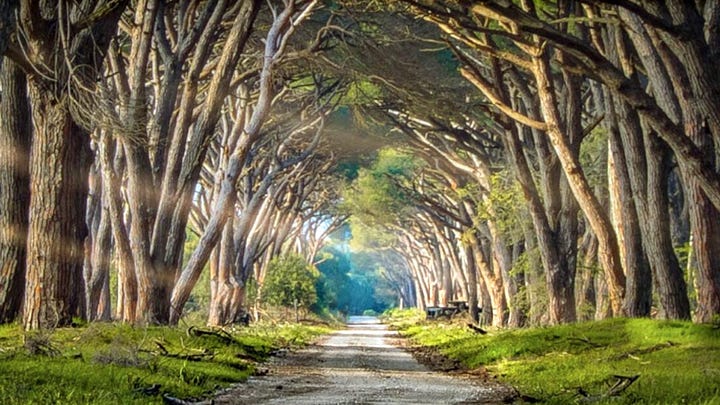
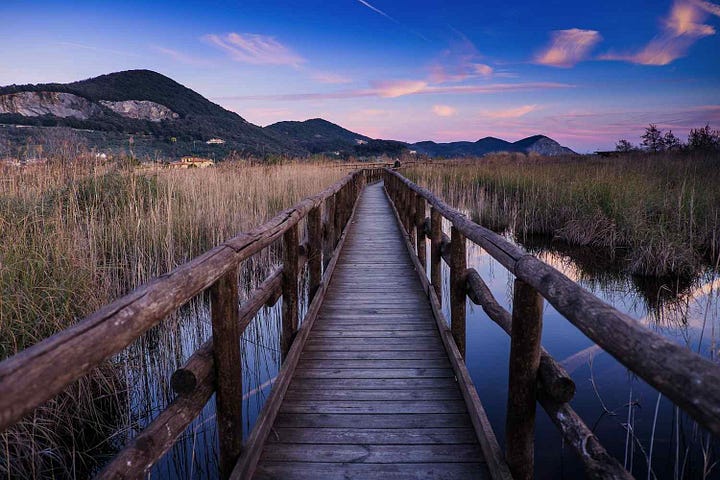










I want to see ALL of this! Thank you for telling this beautiful history!🥰
Love the Keith Haring piece on the outside of a church!